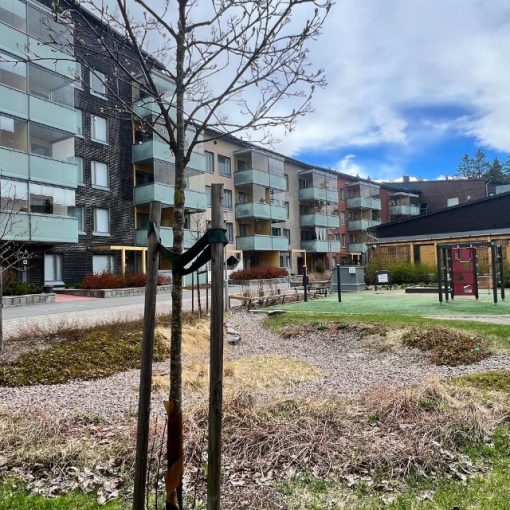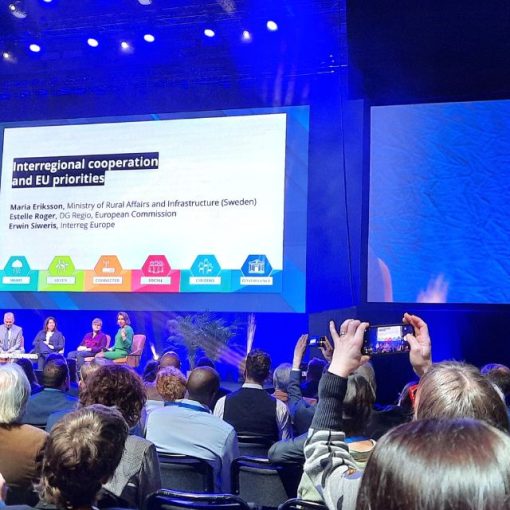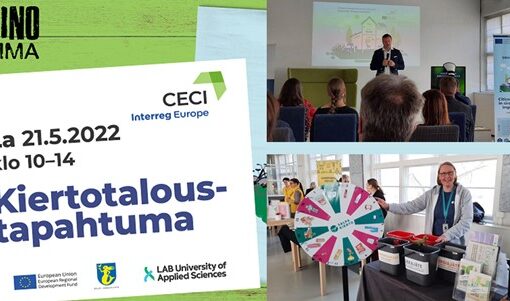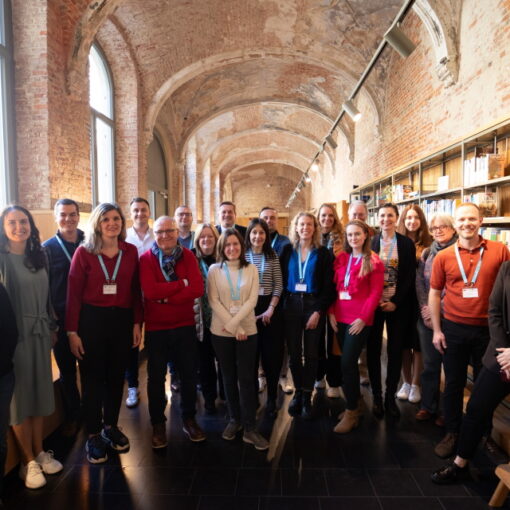In recent years, nature-based solutions (NBS) have entered conversations as solutions for climate change effects as well as biodiversity loss. Nature-based solutions are inspired by nature or rely sustainably on nature. NBS can have several benefits: they can reduce the harm caused by extreme weather events, tackle biodiversity loss, store carbon, etc. (Paloniemi 2019.)
NBS and natural environments overall can have positive effects from the health perspective. Nowadays, both children and adults are increasingly suffering from allergies, asthma and other immune system disorders compared to the 1950s and earlier. Finnish researchers have presented that global biodiversity loss could be connected to increased immune system disorders. People spend less and less time outdoors and live in highly hygienic environments. We have also lost contact with nature’s bacteria. It also seems that children who play in nature are more physically active and motorically skilled than children who have spent little time outdoors. (Grönroos 2023.)
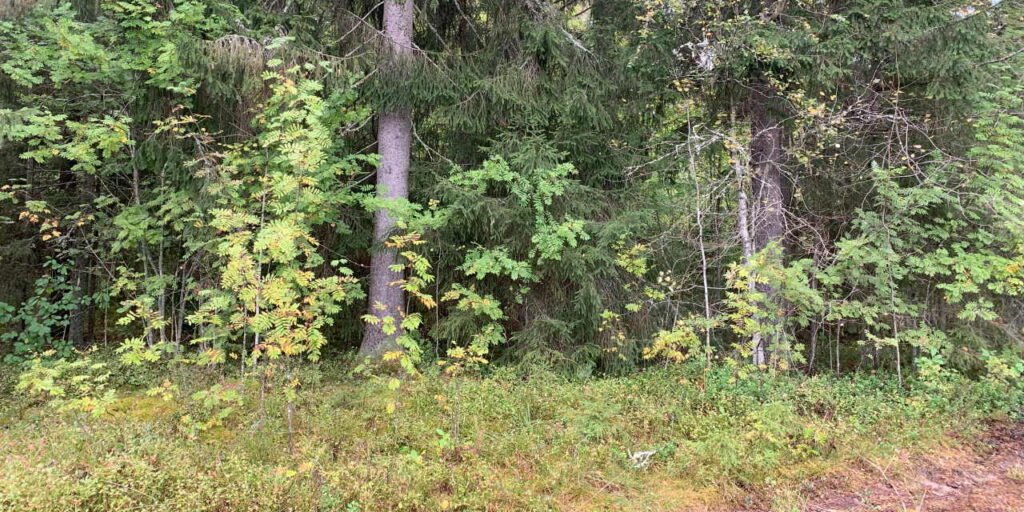
And so that we do not forget the adults: There has been a lot of research on nature’s health benefits in the Nordic countries, and by now, there is evidence that being in natural environments reduces stress and improves mood. There are relatively few studies on the connection between the natural environment and cardiovascular disease and type 2 diabetes, and those topics should be studied more. (Tyrväinen et al. 2024.)
Bringing out the best ideas through co-development
In LAB University of Applied Sciences’ project “Adapting to climate change in South Karelia”, the project partner municipality of Luumäki is developing an existing recreation area, Palolampi, in the center of Luumäki. Luumäki’s vision is to develop a biodiverse and climate change-adapted recreation area together with the local school, residents, and national experts. The idea is that school kids could use the area for biology classes, for example, taking water samples and studying climate change’s effects on plants.
To gather ideas and expertise during planning the site, the project organized a workshop dedicated to this topic in May 2025. The workshop collected altogether 35 attendees from different municipalities, the ELY center, the water management association, the birdwatching association, and nature conservation students. The workshop gave a lot of perspectives and new ideas for planning. From the original idea, which included a more built environment, the overall idea and vision shifted toward supporting the existing nature and allowing humans only to visit and watch the place.
Future steps for the development of Palolampi
Since the expertise collected in the workshop, clearing work in the area will be carried out more moderately and outside the bird nesting season. Small trees and bushes will be retained as nesting places for birds (NBS number 1). Old trees were suggested to be retained for biodiversity, and oaks to be retained as future trees, which benefit from a warmer climate. Big, old trees also act as shade and help cool the microclimate, thus protecting against the increasing future heat (NBS number 2).
To increase the diversity of the stream that runs through the area, it was suggested that rocks and depressions be added. A small wetland is being planned between the stream and the pond, which would also serve to control stormwater (NBS number 3).
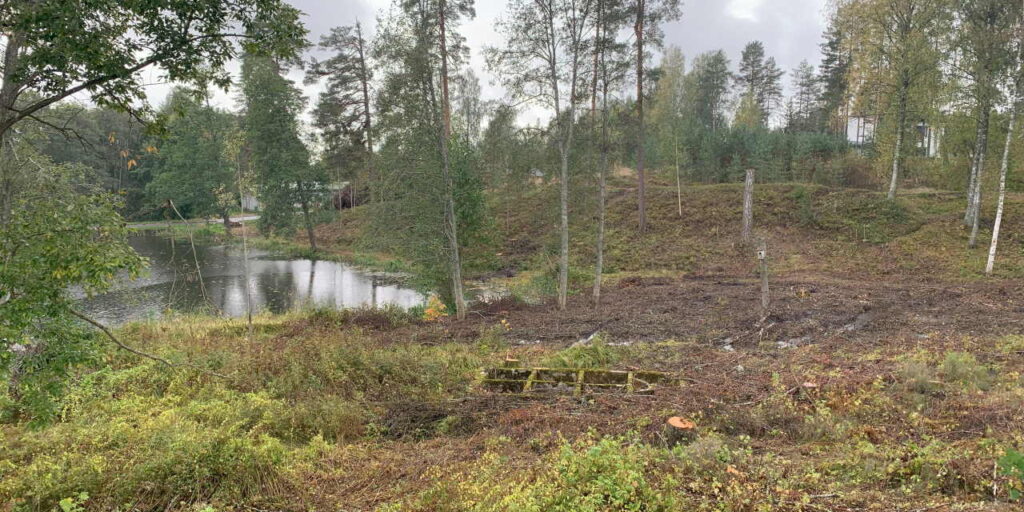
An accessible trail was planned for the wetland area, along which there would be educational information signs about the area’s nature, biodiversity, and climate change, as well as resting places for observing nature (NBS number 4). The municipality of Luumäki is interested in bringing the ruins of the old tannery to light as part of the Palolampi area. This would increase the cultural and recreational values of the area. Also, the local kindergarten joined the development process. They could use the area for day trips and to build huts and play archaeological digs. This would expose the children to soil microbes and provide health benefits in the long run (NBS number 5).
Author
Kaisa Tuominen works as an RDI specialist at LAB University of Applied Sciences. She is the project manager of the “Adapting to climate change” project.
References
Grönroos, M. 2023. Luontoyhteyttä etsimässä – Lasten vieminen luontoon ratkoo montaa ongelmaa. #muutos 24.10.2023. Cited 2 Sep 2025. Available at https://suomenluonto.fi/artikkelit/luontoyhteytta-etsimassa-lasten-vieminen-luontoon-ratkoo-montaa-ongelmaa/
Paloniemi, R. (ed.). 2019. Luontopohjaisten ratkaisujen käytännön toteuttaminen maakunnissa ja kunnissa. Valtioneuvoston selvitys- ja tutkimus- toiminnan julkaisusarja 2019:49. Helsinki: Valtioneuvoston kanslia. Cited 2 Sep 2025. Available at https://julkaisut.valtioneuvosto.fi/bitstream/handle/10024/161758/49_19_Luontopohjaisten%20ratkaisujen%20kaytannon%20totuettaminen_netti.pdf?sequence=1&isAllowed=y
Tyrväinen, L., Halonen, J. I., Pasanen, T., Ojala, A., Täubel, M., Kivelä, S., Leskelä, A.-R., Pennanen, P., Manninen, J., Sinkkonen, A., Haahtela, T., Haveri, H., Grotenfelt-Enegren, M., Lankia, T. & Neuvonen, M. 2024. Luontoympäristön terveysvaikutukset ja niiden taloudellinen merkitys. Luonnonvara- ja biotalouden tutkimus 76/2024. Helsinki: Luonnonvarakeskus. Cited 18 Aug 2025. Available at https://www.sitra.fi/wp/wp-content/uploads/2024/10/luke-luontoympariston-terveysvaikutukset-ja-niiden-taloudellinen-merkitys.pdf

